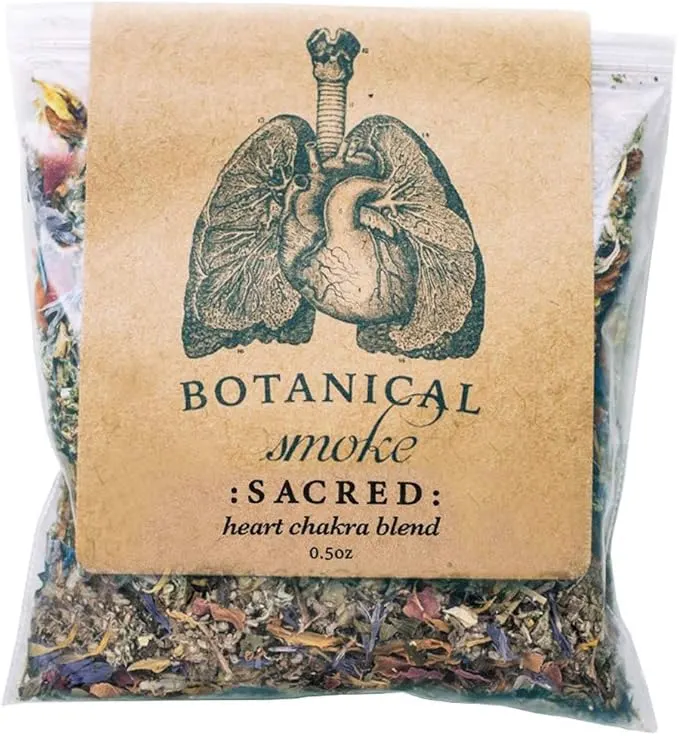Blue Lotus: Benefits, Uses & Relaxation Effects
Blue Lotus: Benefits, Uses & Relaxation Effects. Some people believe blue lotus flower has health benefits, including reducing anxiety and improving sleep. But it has psychoactive properties, and research on its safety and efficacy is needed.
Blue lotus flower (Nymphaea caerulea) is a psychoactive plant, also known as blue Egyptian lotus, blue water lily, and sacred blue lily.

Anima Mundi Smokable Herbs – Sacred Smoke – Heart Chakra Herbal Smoking Blend – with Relaxing Botanicals Like Mugwort, Skullcap, Blue Cornflower, Calendula & Rose Petals (0.5oz)
Organic and Wildcrafted – Sacred Smoke combines smokable herbs like Mugwort, Skullcap, Raspberry Leaf, Calendula Flower, Raspberry Leaf and Blue Cornflower. The resulting blend is gentle, relaxing and grounding.*
It’s been used in traditional medicine for thousands of years as a natural aphrodisiac, sleep aid, and anxiety reliever. However, due to its psychoactive properties, many people wonder if it’s legal and safe to use.
This article tells you all you need to know about blue lotus flower, including its benefits, downsides, legality, and safety.
What is blue lotus flower?
Blue lotus flower is a water lily that predominantly grows in Egypt and certain parts of Asia.
It holds cultural importance, and images of the flower have been found on ancient papyri and on the walls of tombs. Historians believe it was once used in Egypt as a traditional medicine to treat an array of conditions and disorders like anxiety and insomnia.

The two main compounds responsible for the flower’s psychoactive and medicinal effects are apomorphine and nuciferine.
- Apomorphine. A psychoactive compound that acts as a dopamine agonist, meaning it can instill a happy and euphoric feeling. It may also help with muscle control in those with conditions such as Parkinson’s disease and erectile dysfunction.
- Nuciferine. A compound thought to act as an antipsychotic drug that induces feelings of calmness through mechanisms that aren’t yet fully understood. It has also been shown to improve symptoms of erectile dysfunction.
Health Claims
Blue Lotus: Benefits, Uses & Relaxation Effects. There is limited research on blue lotus flower, and most studies that have been conducted have been animal studies, in vitro (test tube), or observational studies of people who have ingested the plant in some form. Because of this, there is no concrete evidence on the benefits of using blue lotus flower nor is there any data on its safety.
Blue lotus flower contains apomorphine, which is thought to stimulate dopamine receptors and improve motor function. Because of this component, researchers have proposed using blue lotus flower for the treatment of depression, insomnia, schizophrenia, Parkinson’s disease, and erectile dysfunction.
Older research indicates that blue lotus flower also contains antioxidants like quercetin, kaempferol, and myricetin. Because of this, it may have antimutagenic effects (the ability to prevent potentially harmful substances from making permanent changes to DNA) and anticarcinogenic effects (the ability to prevent or delay cancer). However, the studies so far have been in vitro and in vivo. There also is no current research indicating this plant can impact health or reduce the risk of disease.
Is Blue Lotus Flower Safe?
Because blue lotus flower is not a regulated substance, it’s nearly impossible to be certain about the ingredients and purity of the products on the market. One study found that none of the commercial blue lotus products they studied resembled authentic extracts, particularly when it came to their smell and their composition.
The researchers also found that the compounds nuciferine and apomorphine were either completely absent from the products or only found in trace amounts.
Downsides
Even though you can buy blue lotus flower online and in certain stores, there’s a large debate as to whether it should be a legal substance due to its psychoactive properties.
The Food and Drug Administration (FDA) labels the flower as poisonous, yet doesn’t classify it as a controlled substance. This means that you can legally purchase blue lotus teas, incense, and oils. It’s legal in most countries except for Poland, Russia, and Latvia.
Though proponents of the flower tout its medicinal benefits, very limited research backs up these claims. Further, there’s no safety data on the substance and no generally accepted dosage.
Therefore, it’s important to speak with your healthcare provider if you’re considering trying blue lotus flower.
It’s also important to note that children and people who are pregnant or breastfeeding should avoid the flower due to the lack of research on its safety in these populations.
How to use it
Blue lotus flower can be used in many different forms, though there’s no data available on its safety, maximum dosage, and potency:
- Tea. To make blue flower lotus tea, add one premade tea bag or 3–5 grams of dried flowers to 1–2 cups (250–500 mL) of hot water. Let steep for 5–10 minutes.
- Smoking. If you choose to smoke it, roll dried flowers using rolling papers. Just keep in mind that this method may cause significant psychoactive effects and should be used with caution.
- Vaping. For vaping, finely ground flowers can be added to a vaporizer and inhaled.
- Alcoholic beverage. Some people infuse wine or alcoholic spirits with the flower. Due to the unknown safety of this, it’s best to avoid it.
- Massage and essential oil. You can purchase blue lotus flower massage oil or essential oil which can enter the body through the skin or nasal passage. Though unknown at this time, many claim that these forms are less potent.
Side Effects of Blue Lotus Flower
Blue lotus is considered a psychoactive plant, which means it can affect your mind or alter your state of consciousness. The plant has been shown to cause hallucinations as well as feelings of euphoria, paranoia, and anxiety.
It can also cause several other side effects, especially if taken in high doses. Here are some potential reactions to taking blue lotus flower:
- Confusion
- Drowsiness
- Dizziness
- Nausea and vomiting
- Slurred speech
- Chest pain
- Rapid heartbeat
- Seizures
Can You Take Too Much Blue Lotus Flower?
People who take high doses of blue lotus may experience a number of uncomfortable or frightening symptoms such as hallucinations, chest pain, and tachycardia (fast heart rate). They also may be anxious, disoriented, paranoid, agitated, and hypoxic (low levels of oxygen). Some people have experienced metabolic acidosis (a buildup of toxins) and priapism (unwanted persistent erection).
It also can take some time for symptoms to subside. One study of people in the military who went to the emergency room after vaping or ingesting blue lotus flower found that it took them about three to four hours to return to a sober state.
As blue lotus flower is not regulated by the FDA or considered safe for consumption in the U.S., there is no information available on the amounts of blue lotus that are safe or unsafe to ingest.
However, you should not take more blue lotus than what is recommended on the product’s packaging. When choosing a product, speak with a healthcare provider to determine if it’s a reputable brand and safe for you to use.




